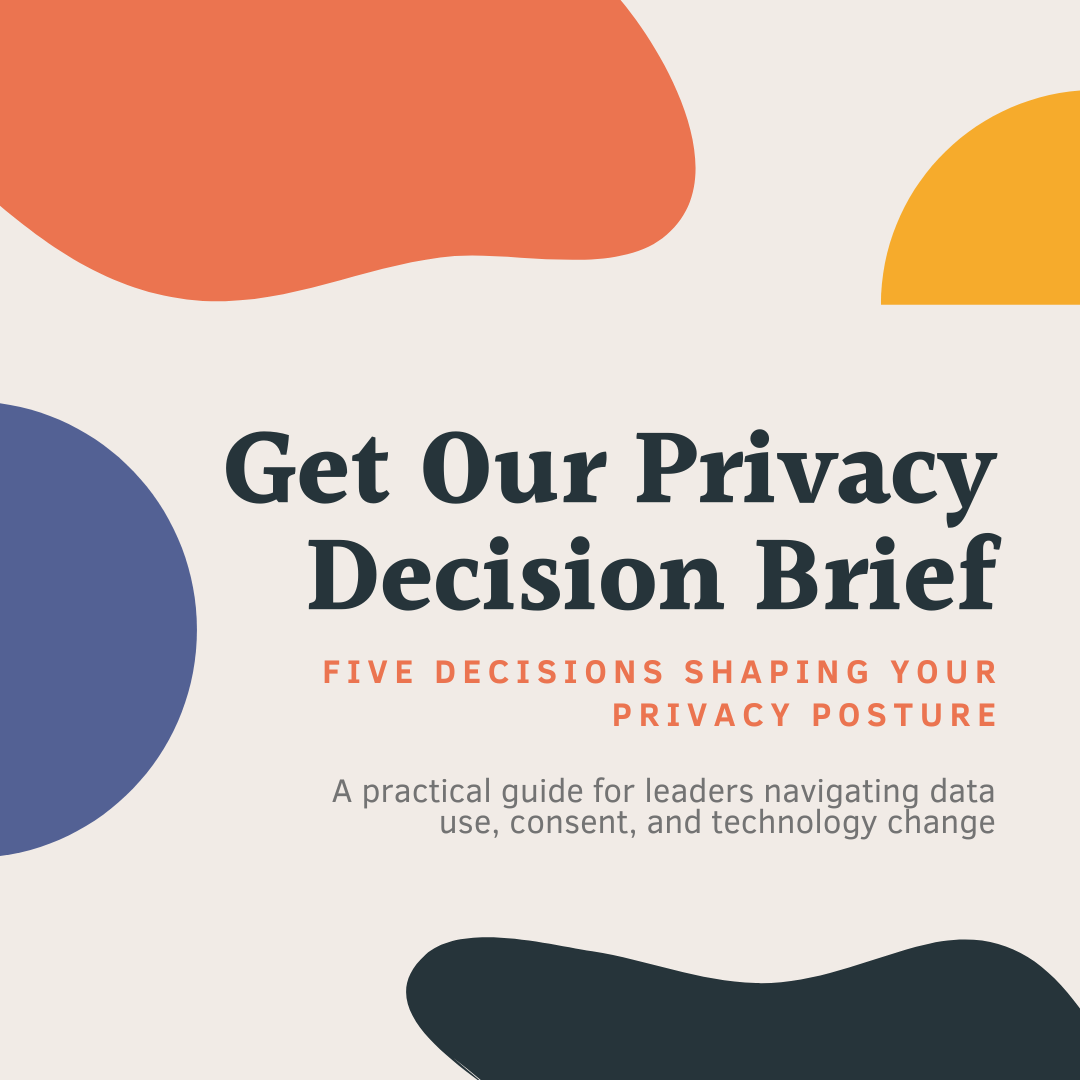Working with the "Department of No"
Apr 14, 2023I'm a big fan of talking about risk. I agree, that's weird.
But I learned early-on in my career that if I was going to work in audience acquisition, I needed to make friends with the finance and legal teams. Both because they're usually really interesting people, AND because if you don't understand each other, you're not getting that money from them. (A lawyer friend recently referred to her team as the "department of no," so I feel like it's fine to call all lawyers that forevermore.)
Jokes aside, defining risk and examining possibilities is a big part of getting to know each other.
Here's how you can align across teams:
Agree in advance about how you'll evaluate third-party partnerships
As a strategist, the worst part of selecting a vendor can often be running your choice(s) by finance and legal. Oftentimes, they have lots of in-depth questions -- as they should -- about data-sharing terms, fee structure, asset ownership, and the like. This part of the process doesn't have to be something you dread. My advice is to get to know what's important to those teams in advance of the contract-signature stage.
Schedule a strategy session so you can come to terms across teams with what your organization is okay with and not. That way, you'll get the opportunity to share your business-case rationale with legal and finance, and similarly, they'll be able to explain to you why a vendor's business practice or policy may or may not work for them. By meeting in advance, you can be on the lookout for those hot-button issues as you run your RFP process and ask good questions of your vendor candidates along the way instead of in the 11th hour. If you're comfortable, I'd go so far as to include representatives from those teams in your vendor screening meetings.
While painstaking at times, gaining extra buy-in just never hurts.
Compare and contrast your philosophy on investment
A conversation to understand your finance team's appetite for risk is a must. As you're building your marketing efforts, you'll want to understand what their expectations are on how soon your investments will pay themselves back, if at all. If you're thinking of a project as a brand builder, and they're thinking of it as an immediate revenue driver, that's a problem. Take the time to agree upon what your ROI time horizon is in advance so you understand each other. Discuss how long you'll test a new idea in-market before pulling the plug. Understand how much of your return is expected to go into program work and how much of it can be used for future investments in staff and/or tech.
By having these conversations early, you'll be better set up to ensure you're able to take calculated risks that align with the organization's appetite for change. Investing can be nerve-wracking, and it's absolutely untenable when you don't have full-team agreement on the points above.
Get transparent about how you're calculating assumptions
Per the point above, being aligned on assumptions is one of the most important elements of ensuring you and your team are able to properly set expectations and safely try new things -- knowing that some of them will fail. That's how we learn. But everyone needs to understand that assumptions are just that -- assumptions.
Document all of your assumptions, make them easy to find, and validate them over time. Keep the conversation between teams fluid so that you can agree upon whether you need to pivot or not dependent on results. To be clear, this is not going to be a painless process. It is not easy to explain marketing tactics to every financial analyst, just as it's not easy to explain profit and loss intricacies to a marketer. There is likely to be friction, but without these shared agreements, you'll be going it alone if things don't work out as you expect. It's worthwhile to ensure you have support at every stage. The last thing anyone wants is budget shortfalls or layoffs as a result of miscommunication.
Set a cadence for regular check-ins
I often find that the best managers are the ones that know the difference between when it's time to get tough on a deadline and when taking someone to coffee will be in better service to everyone.
Your relationship with your legal and finance teams should be tight, and setting a predictable cadence for checking in will provide an ongoing opportunity for you to get to know them outside of fire drills.
Make sure you get a review of your privacy policy on the agenda at least two times per year so you're both up to speed with each others' activities.
--
Defining risk and examining all possibilities is not normally associated with thinking big and going fast, which is normally a marketer's default state. But in acquisition -- especially acquisition by way of paid media -- building the case for investment and quantifying risk go hand-in-hand. I eventually learned to see the beauty and innovation in that process itself. I hope you will, too.
I can help you facilitate these conversations and set your investments up for success:
>> Book 1:1 help to formulate your action plan or discuss a strategic objective.
>> Contact me about ongoing support with financial projections, board relationships, blended investment planning, and more.
